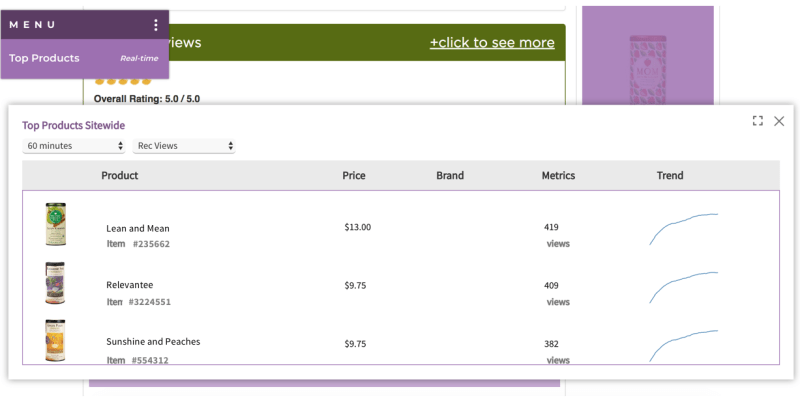Watch all the Transform 2020 sessions on-demand here.
When a shopper walks through the aisles of Saks or Urban Outfitters, they see the same displays as everyone else. But online, it’s a different story: Galleries of clothing items, accessories, and jewelry are tailored to each visitor. Behind the scenes, artificially intelligent algorithms churn through mountains of data, personalizing on-page product recommendations, navigation and sidebar content, and search results.
It’s in part the work of Richrelevance, a 12-year-old company headquartered in San Francisco, California that uses a powerful machine learning framework distributed across 14 datacenters to “turn digital interactions into personal experiences,” as CEO Carl Theobald puts it.
“The digital world is a very cold place,” he told VentureBeat in an interview. “A lot of content is one-size-fits-all, and homepages look the same for everyone. With customers spend[ing] more than 6 hours on digital channels — on tablets, desktops, and mobile phones — versus offline, personalization is more important than ever.”
A roster of over 200 brands — from retailers like Burberry, Barneys, REI, Office Depot, and HP to cruise operators like Carnival — use Richrelevance’s toolset to craft “differentiated experiences” for each customer.
June 5th: The AI Audit in NYC
Join us next week in NYC to engage with top executive leaders, delving into strategies for auditing AI models to ensure fairness, optimal performance, and ethical compliance across diverse organizations. Secure your attendance for this exclusive invite-only event.
Its product search engine, Find, factors intent, context, preferences, and previous behaviors into decisions about which categories and products to show visitors. Another tool, Discover, re-sorts product and category listing based on individual behaviors, affinities, and preferences. And Engage maps customer behavior against targeting and segmentation data.
“The results are going to be unique and relevant to you,” Theobald said. “It’s exactly what brands want on digital.”
But he acknowledged that the “black box” problem — the opaqueness of the algorithm’s inner workings — presents a challenge for clients who prefer a hands-on approach.
“It’s like a self-driving car — when you’re in it … you want to see why it’s turning left or slowing down,” Theobald explained. “Clients want insights into customer behavior. They want to know why an experience is being shown to a customer — what rules are firing and what strategies the [algorithm] is choosing.”

Above: Richrelevance’s Xen AI dashboard.
Richrelevance’s newest offering, Xen AI, was designed to alleviate those concerns. It’s a visual interface that looks sort of like a webpage designer, with a menu system that lets clients drill down to AI-optimized product recommendation widgets, and sidebars, along with other page elements. It shows which strategies were used to drive the content that’s being displayed and allows them to customize the experience on the fly.
“It’s [a] fully open approach to helping customers understand what’s going on with regard to personalization,” Theobald said. “It’s a window into the AI engine, which is testing as new clicks come in. It’s using more than 300 strategies to make decisions about how to display content.”
Users can peel back additional layers if they so choose. In a demo, Theobald walked me through a product page on the Republic of Tea’s website. Personalized segments are highlighted on the page with a light gradient and a menu showing the number of views and clicks they’ve gotten in recent weeks, days, or minutes. On the backend, filters allow for performance comparisons between different AI strategies and placements.
It gets pretty granular. Theobald showed me a profile of an individual user that included their coarse location, the purchases they’ve made, the product pages they’ve viewed, and even their core interests.
That degree of data collection might make some customers feel uncomfortable, but Theobald made a point of saying that Richrelevance uses tokens — not email addresses or any other personally identifiable information — to keep track of users’ usage habits, and that it’s fully GDPR compliant. Retailers who use the system also must comply with privacy laws and regulations, and it’s up to them to let customers know how they’re being tracked.
“That’s our client’s decision — how they disclose the ways the data is collected,” he said.


